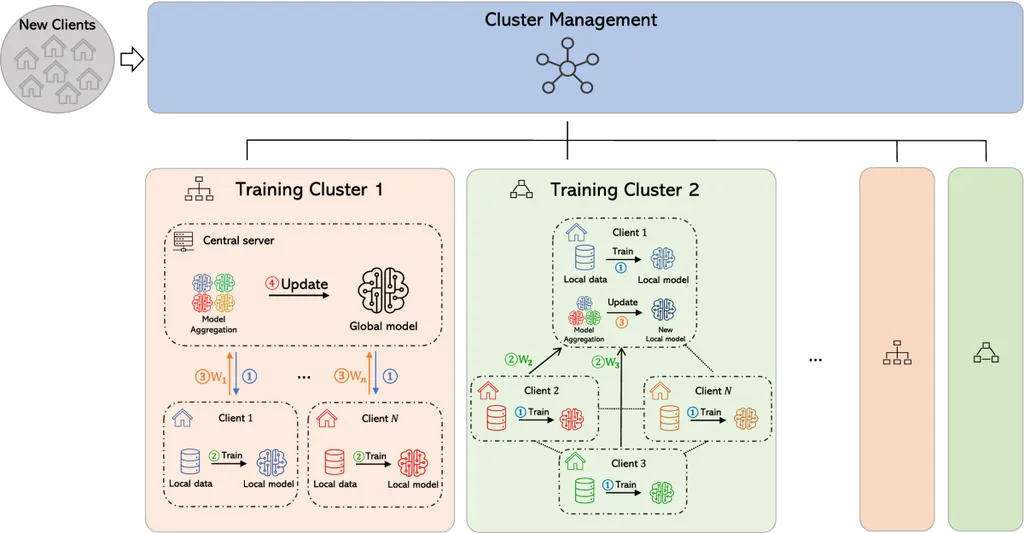In a significant stride towards enhancing privacy and scalability in energy monitoring, researchers have introduced a novel framework that could revolutionize how industrial parks manage their power consumption. The Federated Temporal Pattern-based Non-Intrusive Load Monitoring (FedTP-NILM) framework, developed by Chi Zhang and colleagues at Northeastern University in Shenyang, China, addresses critical challenges in distributed energy resource management.
Non-Intrusive Load Monitoring (NILM) has long been a cornerstone for energy efficiency, enabling the breakdown of total energy consumption into individual appliance or device usage without the need for invasive hardware installations. However, traditional NILM systems rely on centralized models, which can pose privacy risks and struggle to scale effectively in large, distributed environments like industrial parks.
The FedTP-NILM framework tackles these issues head-on by leveraging federated learning, a decentralized approach that keeps data local and secure. “Our framework ensures data privacy while enabling efficient load monitoring in distributed and heterogeneous environments,” explains Chi Zhang, lead author of the study published in *Machines* (translated from the original title in the journal). This innovation is particularly relevant for large-scale industrial parks, where the ability to monitor energy usage across multiple distributed energy resources is crucial.
One of the key components of FedTP-NILM is its federated aggregation method, which combines the FedYogi optimization algorithm with a secret sharing mechanism. This ensures that local data remains secure while still allowing for the aggregation of insights across the network. “By integrating these techniques, we can securely aggregate local data, preserving privacy while improving the overall accuracy of load monitoring,” Zhang adds.
The framework also introduces a pyramid neural network architecture designed to capture complex temporal dependencies in load identification tasks. This architecture includes temporal encoding, pooling, and decoding modules, along with an enhanced feature extractor to better learn and distinguish multi-scale temporal patterns. Additionally, a hybrid data augmentation strategy expands the distribution range of samples by adding noise and linear mixing, further enhancing the model’s robustness.
The experimental results validate the effectiveness of the proposed federated learning framework, demonstrating superior performance in both distributed energy device identification and privacy preservation. This research not only advances the field of NILM but also paves the way for more secure and scalable energy monitoring solutions in industrial settings.
The implications for the energy sector are profound. As industrial parks increasingly adopt distributed energy resources, the ability to monitor and manage energy usage efficiently and securely becomes paramount. FedTP-NILM offers a promising solution that could enhance energy efficiency, reduce costs, and ensure compliance with privacy regulations.
Looking ahead, this research could shape future developments in the field by encouraging further exploration of federated learning and advanced neural network architectures for energy monitoring. As Chi Zhang and his team continue to refine their framework, the potential for widespread adoption in industrial and commercial settings grows, heralding a new era of intelligent, privacy-preserving energy management.

